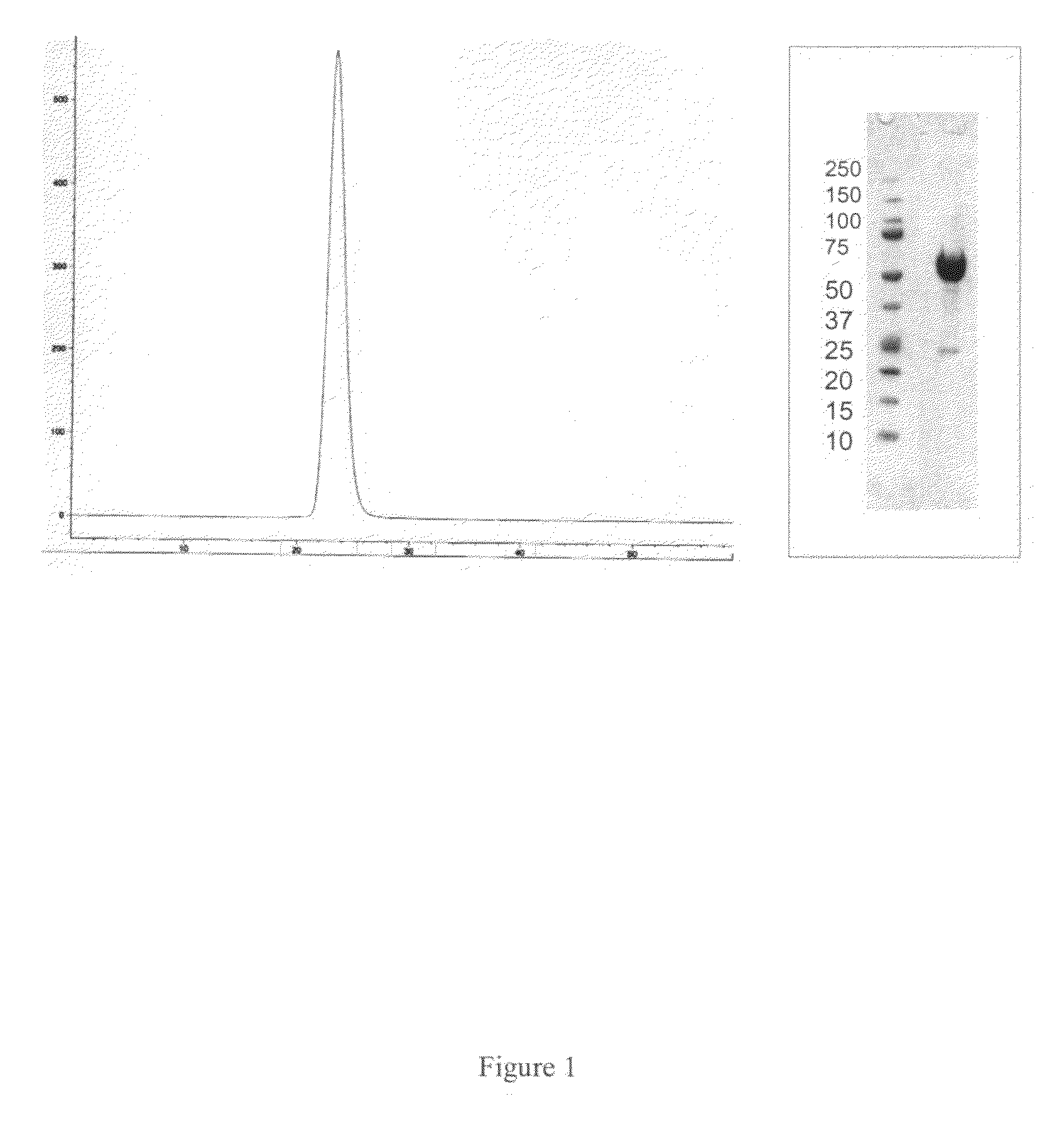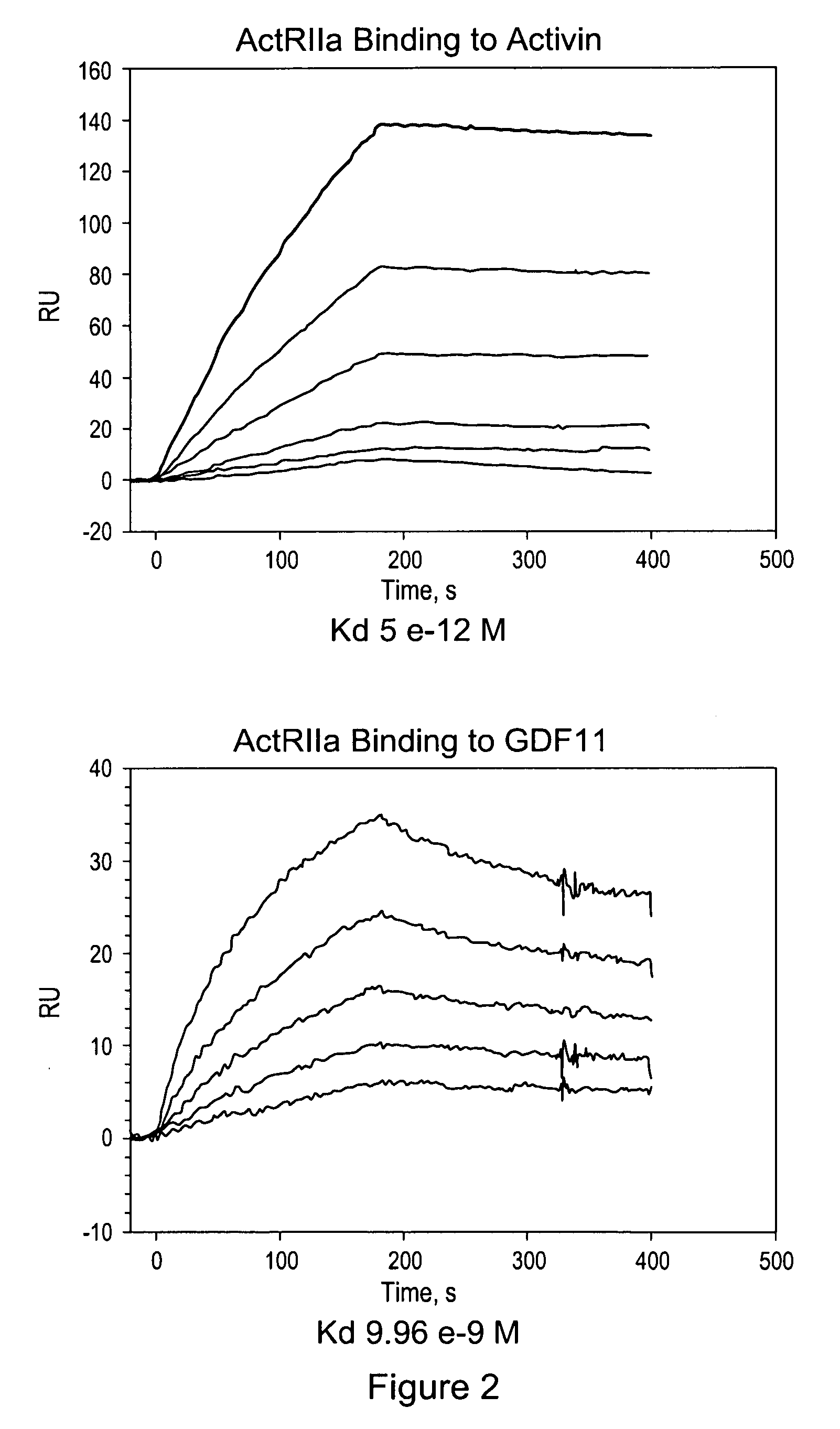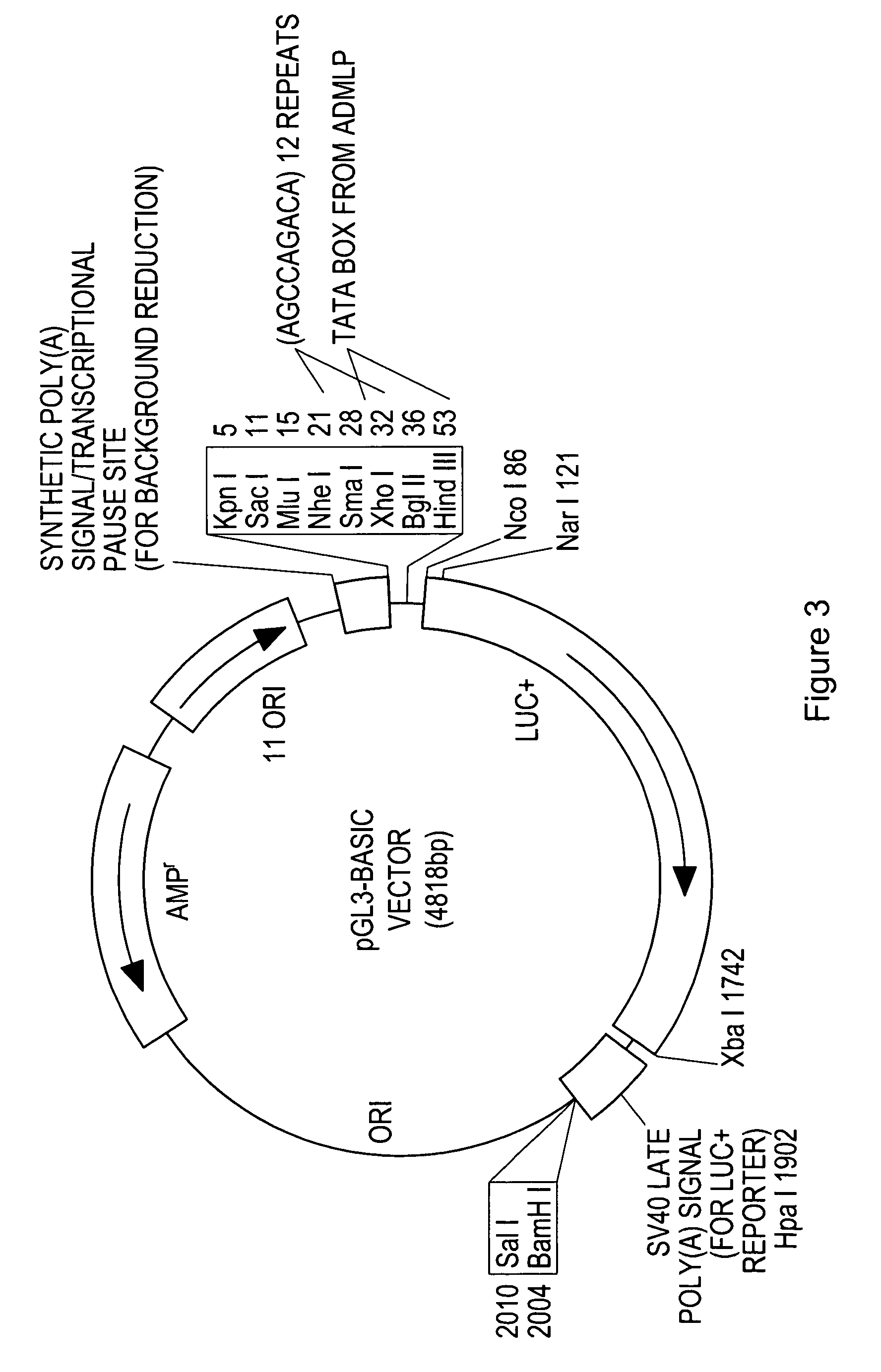Activin-actriia antagonists and uses for promoting bone growth in cancer patients
a technology of activin and axone, which is applied in the field of activin-actriia antagonists and uses for promoting bone growth in cancer patients, can solve the problems of significant medical problems, imbalances in the normal bone remodeling process, and the inability to achieve therapeutic effects that are associated with undesirable side effects, and achieve the effect of stimulating the growth or increasing the mineralization of bon
- Summary
- Abstract
- Description
- Claims
- Application Information
AI Technical Summary
Benefits of technology
Problems solved by technology
Method used
Image
Examples
example 1
ActRIIa-Fc Fusion Proteins
[0152]Applicants constructed a soluble ActRIIa fusion protein that has the extracellular domain of human ActRIIa fused to a human or mouse Fc domain with a minimal linker in between. The constructs are referred to as ActRIIa-hFc and ActRIIa-mFc, respectively.
[0153]ActRIIa-hFc is shown below as purified from CHO cell lines (SEQ ID NO: 7):
ILGRSETQECLFFNANWEKDRTNQTGVEPCYGDKDKRRHCFATWKNISGSIEIVKQGCWLDDINCYDRTDCVEKKDSPEVYFCCCEGNMCNEKFSYFPEMEVTQPTSNPVTPKPPTGGGTHTCPPCPAPELLGGPSVFLFPPKPKDTLMI
[0154]The ActRIIa-hFc and ActRIIa-mFc proteins were expressed in CHO cell lines. Three different leader sequences were considered:
(i) Honey bee mellitin (HBML):MKFLVNVALVFMVVYISYIYA(SEQ ID NO: 8)(ii) Tissue Plasminogen Activator (TPA):MDAMKRGLCCVLLLCGAVFVSP(SEQ ID NO: 9)(iii) Native:MGAAAKLAFAVFLISCSSGA.(SEQ ID NO: 10)
[0155]The selected form employs the TPA leader and has the following unprocessed amino acid sequence:
MDAMKRGLCCVLLLCGAVFVSPGAAILGRSETQECLFFNANWEKDRTNQTGVEPCYG(SEQ...
example 2
ActRIIa-mFc Promotes Bone Growth In Vivo
[0166]Normal female mice (BALB / c) were dosed with ActRIIa-mFc at a level of 1 mg / kg / dose, 3 mg / kg / dose or 10 mg / kg / dose, with doses given twice weekly. Bone mineral density and bone mineral content were determined by DEXA, see FIG. 6.
[0167]In BALB / c female mice, DEXA scans showed a significant increase (>20%) in bone mineral density and content as a result of ActRIIa-mFc treatment. See FIGS. 7 and 8.
[0168]Thus, antagonism of ActRIIa caused increased bone density and content in normal female mice. As a next step, the effect of ActRIIa-mFc on bone in a mouse model for osteoporosis was tested.
[0169]Andersson et al. (2001), established that ovariectomized mice suffered substantial bone loss (rougly 50% loss of trabecular bone six weeks post-operation), and that bone loss in these mice could be corrected with candidate therapeutic agents, such as parathyroid hormone.
[0170]Applicants used C57BL6 female mice that were ovariectomized (OVX) or sham ope...
example 3
ActRIIa-mFc Ameliorates or Prevents Bone Damage in a Murine Model of Multiple Myeloma
[0180]Multiple myeloma patients exhibit a bone loss disorder characterized by increased osteoclast activity and decreased bone formation by osteoblasts. The 5T2MM model of myeloma in mice is based on the use of tumor cells (5T2MM cells) from a type of spontaneous tumor that develops in aged mice and causes effects in mice that are similar to those seen in human multiple myeloma patients. See, e.g., Vanderkerken et al., Methods Mol. Med. 2005; 113:191-205. ActRIIa-mFc was tested for effects in this model.
[0181]5T2MM cells injected into C57Bl / KaLwRij mice promoted an increase in osteoclast surface, the formation of osteolytic lesions and caused a decrease in bone area. Bone disease was associated with a decrease in osteoblast number, osteoblast surface and a reduction in mineralization.
[0182]Mice bearing 5T2MM cells were treated with ActRIIa-mFc (RAP-011) (10 mg / kg, i.p. twice weekly), or a vehicle, f...
PUM
| Property | Measurement | Unit |
|---|---|---|
| concentration | aaaaa | aaaaa |
| concentration | aaaaa | aaaaa |
| dissociation constant | aaaaa | aaaaa |
Abstract
Description
Claims
Application Information
 Login to View More
Login to View More - R&D
- Intellectual Property
- Life Sciences
- Materials
- Tech Scout
- Unparalleled Data Quality
- Higher Quality Content
- 60% Fewer Hallucinations
Browse by: Latest US Patents, China's latest patents, Technical Efficacy Thesaurus, Application Domain, Technology Topic, Popular Technical Reports.
© 2025 PatSnap. All rights reserved.Legal|Privacy policy|Modern Slavery Act Transparency Statement|Sitemap|About US| Contact US: help@patsnap.com



